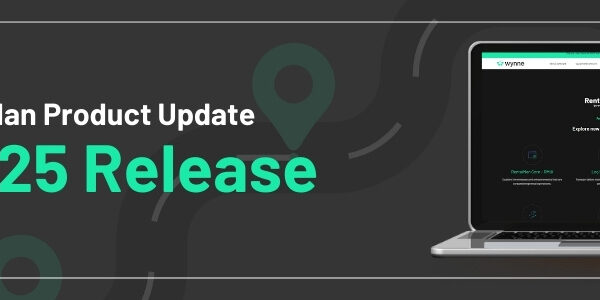
Your rental company has made a decision on the Enterprise Resource Planning Solution that best fits your needs. Now it’s time to implement it. Where do we start?
1. The software solution choice was made for some very good reasons. It’s time to translate those reasons into the ERP roadmap in a granular fashion. Simply put, what do you want your ERP solution to look like when it is fully implemented? A gap analysis meeting will be scheduled between the organization implementing your ERP selection and internal resources that are able to explain business process through all aspects of the organization. The enterprise package likely has configuration points that dictate how the system will react. Business process and system functionality will be matched up to ensure your organization is able to leverage superior information technology in making better-informed decisions. The primary takeaway from this activity will be a listing of the processes that define the future state of your ERP solution and desired process.
2. Before we get our hands dirty and callused from the heavy lifting, let’s define success in the context of the ERP install.
- Is it a set monetary budget that we need to stay below? There is a cost associated with using internal resources and business partners. What is the budget for each and in total?
- What factor does timing play into your organization’s success calculation? In many rental verticals the demand for goods and services is seasonal. There are certainly optimal times to schedule ERP installations and the timing in scheduling activities may play a large part in defining a win.
3. Now that we can define success, let’s create a framework to help us get there.
- Who is going to help remove roadblocks, assist in making organizational decisions and be the arbitrator where multiple options are involved? This group would be the project sponsors and stakeholders. Defining the stakeholders is a start in creating the project framework.
- What is the scope of the installation? We have created a matrix for a successful installation, but let’s define what specific deliverables will ensure that we get there. This could include writing web service to interface with a third party printer that will send out invoices to customers. The more detail and that is included in the scope document, the more likely success will be achieved.
4. If failing to plan, is planning to fail then we need to plan, plan, plan…and then plan some more. With your ERP installation, planning is the most vital piece and it is imperative that the parties involved understand what the plan is. Who’s going to do what…and when? An effective project plan will translate the defined scope into an ordered set of instructions with a defined resource. An overall Project Manager will be responsible for maintaining the plan and ensuring tasks are completed to meet timelines with acceptable quality levels.
5. Without adequate I/T infrastructure in place, implementing an ERP solution is about as difficult and useful as a car with no engine. There are items to consider such as connectivity, thin and fat clients, printers and monitors. How will users connect to the ERP – via VPN, over a public IP address? Also, there are factors to consider such as field user verse onsite user access. Are the printers you have compatible with the ERP solution, or do you need to budget for new devices? If the ERP solution requires a lot of plugins and there are clients to install, memory upgrades could be required. If the ERP solution is browser based users might be able to get by with a minimal hardware solution but may require superior connectivity.
6. Two questions on the tip of stakeholder’s tongues are invariably “When can we go live?” and “Are we ready to go live?” The answer generally boils down to “when will the data be ready”. Often overlooked in the implementation process is the completeness of data being brought into the ERP solution – where is the data coming from, who is validating the data and how is the data being verified. Without adequately scrubbed data, the implementation is an uphill fight with end users losing confidence in the solution due to the perception that the system is flawed. Business owners will spend an inordinate amount of time trying to understand why the ERP system is not behaving as designed. And the solution provider will burn up the midnight oil in analyzing what is a system defect as opposed to a data issue. A successful implementation will include a checkpoint tied to how the system reacts to the loaded data.
7. The best way to ensure organizational buy-in for the new ERP solution is through training and education.
- There are two methodologies that are generally used in end user training. The first is a train—the-trainer approach. The ERP software provider will educate internal trainers in all aspects of the installed ERP solution. The internal training group will create a synthesized training plan and incorporate business process tailored to each department based on job responsibility. The second approach places end user training responsibility on the ERP software provider. The risk in this approach is that the software provider does not have oversight over what users will be able to do, or not do, in the implemented system. While the software provider will be able to provide example, of best practice, they may not be versed on company policy and procedure. In order to facilitate adoption, printed and electronic training material should also be quickly accessible.
- To avoid bogging down internal help desks, cut sheets or quick guides defining a step by step approach to daily activity are useful. Quick guides should be visual with screenshots documenting navigation and data points that are needed.
8. The system is configured, and users are able to navigate it…now what about my customers? During the implementation cycle, an often overlooked topic till the 11th hour is customer facing documents. Forms need to be printed, faxed and, or emailed. Also, forms will certainly need to be customized to include legalese and company logos. Documents outputted to clients are typically well thought out and presented in a particular fashion that may have been subject to cross departmental approvals. For that reason, your organization may be very sensitive to the manner in which data is presented to your customer. Understanding what the needs are for documents internal and external should be defined as early in the project as possible to allow for the back-and-forth that could be needed in ensuring that your customer is proffered information in just the right manner.
9. You’ve made it to go-live…you’re a little stressed out but excited for the changes coming. Having contingency plans and a beefed up system support staff in place for the system cutover will help you maintain a healthy sleep schedule.
For more on this topic, read 5 things you must do before during and after an implementation.
Written by Ashish Udeshi, Wynne System Project Coordinator




